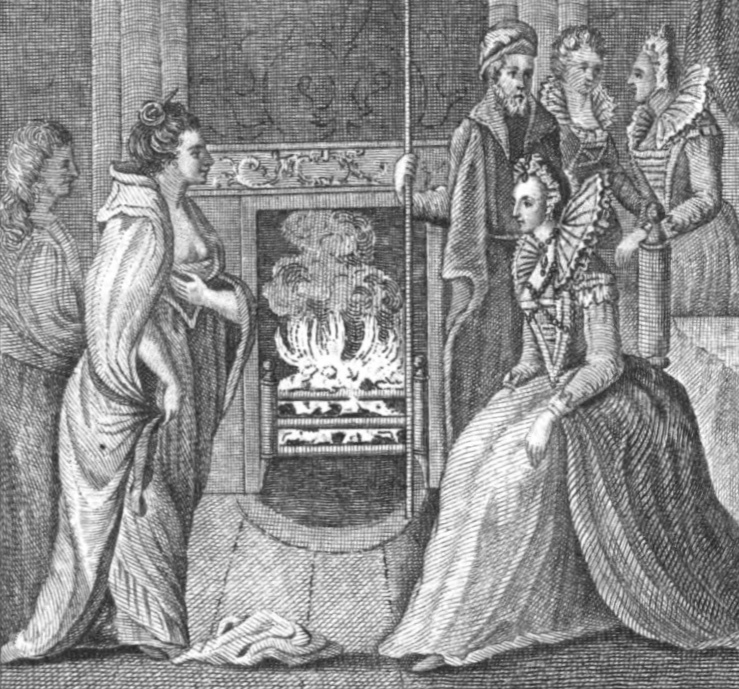 |
| In Country Mayo, Ireland |
Gráinne was born in 1530 in Western Ireland. Her father, Owen "Dubhdara" O'Malley, was a chieftain of his clan, a title that she would come to inherit in her own way. Ireland was, at the time, split into many smaller clans, but the O'Malleys were well-established powerhouses of the coastline. According to a bibliography by Sally Driscoll, the clan motto was "Terra Marique Potens" - "powerful by land and sea." As a young child, Gráinne showed a natural aptitude for the ocean. It is said that she cut her hair and actively sought out the life of a sailor. This, according to Driscoll, led to her name "Granuaile," meaning "Grace of the Cropped Hair."
 |
| Caislean na Circe, or The Hen's Castle |
In the following years, Gráinne Ní Mháille would establish herself as an independent power. Although she could not claim the full implications of the traditional title of chieftain on land as a woman, she amassed considerable power at sea. Many of her husband's followers chose to follow her instead of deferring to the new chieftain, and her naval power grew to a private army of over 200 men and numerous ships. As Anne Chambers writes in "Ireland's Pirate Queen," life on the seas was a tough life, with little privacy and backbreaking work, but by preying on merchant ships and defying naval ships from England sent to challenge and capture her she quickly made a legend of herself. By 1966 she decided to marry again, choosing her own husband (Richard Bourke) on merit of his castle. After a year, and after strengthening her supporter's influence throughout the castle, she locked him out and divorced him. They did, however, have one son - Theobald - whom Gráinne gave birth to at sea. Rather infamously, when her ship was boarded the day after his birth, it is said she stormed on deck and shot the leading officers herself.
 |
| Meeting Queen Elizabeth I |
Perhaps one of her most famous legends is her meeting with Queen Elizabeth I. By the 1570s, the English were pushing more and more to establish their power over Ireland. Sir Richard Bingham, who became the English Governor in 1584, particularly detested Gráinne and harassed her and her followers relentlessly; Gráinne. conversely, rebelled several times against the encroachment of English power. This culminated in not only in her arrest (which she only narrowly avoided execution) and loss of much of her wealth, but by the capture of her youngest son and the murder of her eldest. In response, Gráinne directly petitioned the queen, for at this point she was tired of fending of Bingham. When her son was accused of treason, Gráinne traveled directly to the queen. Although no clear account of this meeting exists, Gráinne must have impressed the queen, for Elizabeth ordered the son's release and granted back Gráinne's lands if Gráinne would fight England's enemies.
Gráinne lived into her seventies and died at Rockfleet castle. She was buried by the abbey on Clare Island, in view of the sea.
Unfortunately, few historical records survive that speak about Gráinne, due (in part) to the unfortunate erasure by history since she was a female warrior whom historians and men of her time viewed as having overstepped her bounds. Perhaps the most important surviving document is ""Eighteen Articles of Interrogatory," supplied by Queen Elizabeth; it is the testimony of her life, marriages, inheritances, and other information supplied prior to her infamous meeting with the queen during her petition for relief. However, Gráinne's legacy has survived into the modern day. Beyond her legends, she has been mentioned or used for inspiration in numerous books, plays, and songs, and has become emblematic of Ireland's spirit. As a warrior woman, her agency in choosing her own life, relationships, and way of life is inspiring, especially in the face of the difficulties not only of a life at sea but by the encroachment of foreign powers. Her ferocity and cunning are fitting for any legacy of a warrior woman, even by contemporary views. Even though attempts were made to cover up her story, it still survived - something, indeed, to take heart in.
Works Cited
Chambers, Anne. “Ireland’s Pirate Queen.” World of Hibernia, vol. 4, no. 4, Spring 1999, pp. 110, Academic Search Complete, http://proxy-bloomu.klnpa.org/login?url=http://search.ebscohost.com/login.aspx?direct=true&db=a9h&AN=1697487&site=eds-live&scope=site. Driscoll, Sally. “Grace O’Malley.” Grace O’Malley, Aug. 2017, pp. 1, MAS Ultra - School Edition, proxy-bloomu.klnpa.org/login?url=http://search.ebscohost.com/login.aspx?direct=true&db=ulh&AN=19625266&site=eds-live&scope=site.
Faherty, Claire. “Castle Kirk - Castle of the Hen ( Caislean na Circe).” Oughterard Heritage, 7 Dec. 2011, http://www.oughterardheritage.org/content/topics/castle-kirk-castle-of-the-hen-caislean-na-circe.
Rennie, Daniel. “How Irish Pirate Queen Grace O’Malley Defied Elizabeth I and Conquered a Man’s World.” All That’s Interesting, 15 July 2018, https://allthatsinteresting.com/grace-omalley.
Zulkosky, C. K. “Grace O’Malley.” Salem Press Biographical Encyclopedia, 2013, Research Starters, proxy-bloomu.klnpa.org/login?url=http://search.ebscohost.com/login.aspx?direct=true&db=ers&AN=88367445&site=eds-live&scope=site.
I was fascinated to read this. I was astonished to find out how much of the romanticized musical story was actually true. She certainly deserves to have her place recognized in Irish/British history.
ReplyDelete